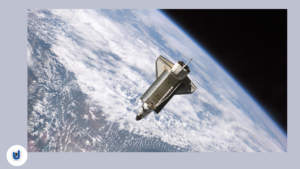Ozone Layer: Causes, Effects, and Solutions to Ozone Depletion
Ozone depletion refers to the thinning of the ozone layer in Earth’s stratosphere, primarily caused by the release of ozone-depleting substances (ODS) into the atmosphere. This issue has been a subject of concern for several decades due to its far-reaching environmental and health consequences. In this article, we will explore the causes, effects, disease caused by ozone depletion and potential solutions to the problem of ozone depletion.
Thank you for reading this post, don't forget to subscribe!
How Ozone layer depleted:
Ozone depletion refers to the thinning of the ozone layer in the Earth’s stratosphere, particularly in the region known as the ozone hole. This depletion is primarily caused by the release of certain human-made chemicals called ozone-depleting substances (ODS), including:
. chlorofluorocarbons (CFCs)
. Halons, and other similar compounds. When these ODS are released into the atmosphere, they eventually reach the stratosphere, where they are broken down by solar ultraviolet (UV) radiation, releasing chlorine and bromine atoms. These atoms then catalytically destroy ozone molecules, leading to the thinning of the ozone layer.
Ozone is crucial because it absorbs most of the harmful ultraviolet (UV) radiation from the sun, which can be harmful to life on Earth. A thinner ozone layer allows more UV radiation to reach the Earth’s surface, leading to various environmental and health issues, such as an increase in skin cancer and damage to ecosystems.
Efforts to address ozone depletion have been made through international agreements like the Montreal Protocol, which has been successful in phasing out the production and use of many ozone-depleting substances. As a result, the ozone layer is gradually recovering, although it will take many years for a full recovery to occur.
Causes of Ozone Depletion:
The primary cause of ozone depletion is the release of ODS(Ozone depleting substance), which includes: .chlorofluorocarbons (CFCs)
. Halons
. carbon tetrachloride
and methyl chloroform. These chemicals were commonly used in various industrial and consumer products, such as refrigerants, aerosol propellants, and solvents. When released into the atmosphere, ODS eventually reach the stratosphere, where they break down due to solar ultraviolet (UV) radiation, releasing chlorine and bromine atoms. These atoms then catalyse the destruction of ozone molecules, leading to ozone depletion.
Effects of Ozone Depletion:
The ozone layer, located in the Earth’s stratosphere, plays a critical role in protecting various species, including humans, animals, and plants, from the harmful effects of ultraviolet (UV) radiation. The impact of the ozone layer varies across different species:
Effects of Ozone depletion on Human:
Skin Protection:
The ozone layer acts as a shield against harmful UV-B and UV-C radiation from the Sun. It helps protect human skin from excessive UV exposure, reducing the risk of skin cancer, sunburn, and premature ageing.
Eyes Protection:
Ozone depletion can lead to an increase in UV radiation at the Earth’s surface, which can harm the eyes, potentially causing cataracts and other eye conditions.
Effect of Ozone layer on Wildlife:
Marine Life:
Phytoplankton, the foundation of marine food chains, can be sensitive to increased UV radiation. Damage to phytoplankton can disrupt marine ecosystems, affecting fish and other marine species that rely on them for food.
Terrestrial Animal:
Some animals may be more exposed to UV radiation due to changes in vegetation and habitats caused by ozone depletion. This can impact their health, behaviour, reproductive patterns and their lifestyle.
Reptile and Amphibians:
Many reptiles and amphibians have semi-permeable skin, making them more susceptible to UV radiation. Ozone depletion can lead to higher UV exposure, potentially harming these species and their habitats. Ozone badly damage the life of reptiles and amphibians.
Effects of Ozone depletion on plants:
Crop damage:
Increased UV radiation can affect crop yields and the growth of plants. Some plants are more sensitive to UV-B radiation, which can lead to reduced agricultural productivity and food security concerns.
Altered Ecosystem:
Changes in plant growth and distribution due to ozone depletion can impact entire ecosystems. This can disrupt the balance of species and affect biodiversity.
Effect of Ozone depletion on Microorganisms:
Phytoplankton:
These microscopic oceanic plants are highly sensitive to UV radiation and can be adversely affected by ozone depletion. A reduction in phytoplankton populations can disrupt marine food chains.Disturb ecosystem life.
Cyanobacteria:
Some types of cyanobacteria, which are important in various ecosystems, can be negatively impacted by increased UV radiation, affecting the nutrient cycles and stability of aquatic and terrestrial environments.
The ozone layer plays a crucial role in protecting a wide range of species from the harmful effects of ultraviolet radiation. Ozone depletion can have cascading effects on ecosystems, disrupting the balance and health of various species, including humans, animals, and plants. Efforts to preserve and restore the ozone layer are essential for the well-being of these diverse life forms on Earth.
Effects on Environment:
Increase UV Radiation:
Ozone in the stratosphere acts as a shield, absorbing and blocking the majority of harmful UV-B and UV-C radiation from the Sun. Ozone depletion allows more of this radiation to reach the Earth’s surface, leading to increased rates of skin cancer, cataracts, and other health issues in humans, as well as harm to animals and plants.
Environmental Consequences:
Ozone depletion has a cascading effect on ecosystems. Increased UV radiation can harm phytoplankton, which forms the base of the marine food chain. It can also damage terrestrial plants and affect the growth of crops, potentially impacting food security.
Stratospheric cooling:
The loss of ozone in the stratosphere can alter the temperature balance, leading to cooling of this atmospheric layer. This, in turn, can affect weather patterns and the circulation of air masses and climate change occurs which causes global warming.
Disease caused by Ozone Depletion:
Ozone depletion, specifically the thinning of the ozone layer in the Earth’s stratosphere, has been linked to several adverse health effects, primarily due to increased exposure to harmful ultraviolet (UV) radiation. These health consequences can manifest as various diseases and conditions, including:
Skin Cancer:
Increased UV-B radiation due to ozone depletion can lead to a higher incidence of skin cancers, including melanoma, basal cell carcinoma, and squamous cell carcinoma. Prolonged exposure to UV radiation is a major risk factor for skin cancer.
Cataracts:
Ozone depletion is associated with an elevated risk of developing cataracts in the eyes. Cataracts are characterised by the clouding of the eye’s lens and can lead to impaired vision or blindness if left untreated.
Sunburn:
Ozone depletion results in more UV-B radiation reaching the Earth’s surface, leading to an increased risk of sunburn. Severe sunburn can cause pain, skin damage, and can be a precursor to skin cancer.
Weaken immune system:
Prolonged exposure to increased UV radiation can suppress the immune system, making individuals more vulnerable to infectious diseases and reducing the body’s ability to defend against infection.
DNA Damage:
UV radiation can cause damage to the DNA in skin cells. Over time, this damage may accumulate and contribute to the development of skin cancer.
Eyes Damage:
Ozone depletion can harm the eyes, leading to conditions like pterygium, a growth on the eye’s surface, and photokeratitis, often referred to as “snow blindness.”
It’s important to note that while ozone depletion contributes to these health issues, it is not the sole factor responsible for their occurrence. Other factors, such as genetics, lifestyle choices, and overall UV exposure, also play significant roles in the development of these diseases and conditions. Public awareness, sun protection practices, and the use of sunscreen are essential for mitigating the health risks associated with ozone depletion and UV radiation exposure.
Solution to Ozone depletion:
Montreal Protocol:
The most significant international effort to address ozone depletion is the Montreal Protocol on Substances that Deplete the Ozone Layer, adopted in 1987. It aims to phase out the production and consumption of ODS and has been highly successful in reducing their use.
Transition to ODS Alternatives:
Many industries have transitioned to alternative substances that are ozone-friendly, such as hydrochlorofluorocarbons (HCFCs) and hydrofluorocarbons (HFCs). However, some HFCs are potent greenhouse gases, so continued efforts are needed to find more environmentally friendly alternatives.
Public Awareness:
Raising awareness about the harmful effects of ozone depletion and the importance of using ozone-friendly products is crucial. Educating people and businesses can lead to more responsible choices.
Conclusion:
In conclusion, ozone depletion remains a critical global environmental issue, but significant progress has been made in addressing it through international agreements and efforts to reduce the use of ODS. Continued vigilance and cooperation among nations are essential to ensure the recovery of the ozone layer and mitigate the adverse effects of increased UV radiation on our planet.
FAQ:
Certainly! Here are some frequently asked questions (FAQ) about ozone depletion:
1.What is ozone depletion?
Ans. Ozone depletion refers to the thinning of the ozone layer in Earth’s stratosphere, primarily caused by the release of certain chemicals, such as chlorofluorocarbons (CFCs).
2. What is the ozone layer?
Ans. The ozone layer is a region of the Earth’s stratosphere that contains a relatively high concentration of ozone (O3) molecules. It plays a crucial role in absorbing and blocking harmful ultraviolet (UV) radiation from the sun.
3.What causes ozone depletion?
Ans. Ozone depletion is primarily caused by the release of human-made chemicals, including CFCs, halons, carbon tetrachloride, and methyl chloroform. These chemicals release chlorine and bromine atoms when they break down in the stratosphere, which destroy ozone molecules.
4.Why is ozone depletion a concern?
Ans. Ozone depletion allows more harmful UV-B and UV-C radiation to reach the Earth’s surface, which can lead to increased rates of skin cancer, cataracts, and harm to ecosystems, including damage to marine life and crops.
5. What is the ozone hole?
Ans. The ozone hole is a severe depletion of ozone in a specific region over Antarctica that occurs seasonally, primarily during the Southern Hemisphere’s spring. It is the most well-known example of ozone depletion.
6. How is ozone depletion monitored?
Ans . Ozone depletion is monitored using instruments like satellites, ozone monitoring stations, and balloons equipped with ozone-measuring instruments. The data collected helps track changes in ozone levels.
7. Are international agreements in place to address ozone depletion?
Ans. Yes, the Montreal Protocol, adopted in 1987, is an international treaty aimed at phasing out the production and consumption of ozone-depleting substances. It has been successful in reducing the release of these harmful chemicals.
8.Is the ozone layer recovering?
Ans. Thanks to the efforts made under the Montreal Protocol, there are signs of ozone layer recovery, particularly in areas outside the ozone hole. However, a full recovery will take many decades.
9.What can individuals do to help protect the ozone layer?
Ans. Individuals can contribute by using eco-friendly products, recycling or properly disposing of items containing ozone-depleting chemicals, and reducing energy consumption to indirectly decrease the release of these substances.
10. How does ozone depletion relate to climate change?
Ans. While ozone depletion and climate change are separate environmental issues, some ozone-depleting substances, such as CFCs, are also potent greenhouse gases. The actions taken to address ozone depletion have helped mitigate climate change to some extent.
I hope these FAQs provide you with a better understanding of ozone depletion. If you have more questions or need further information, feel free to ask!
